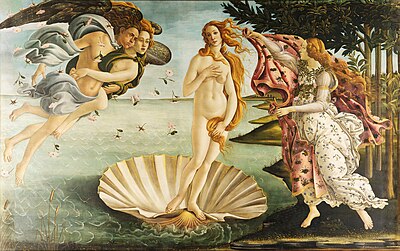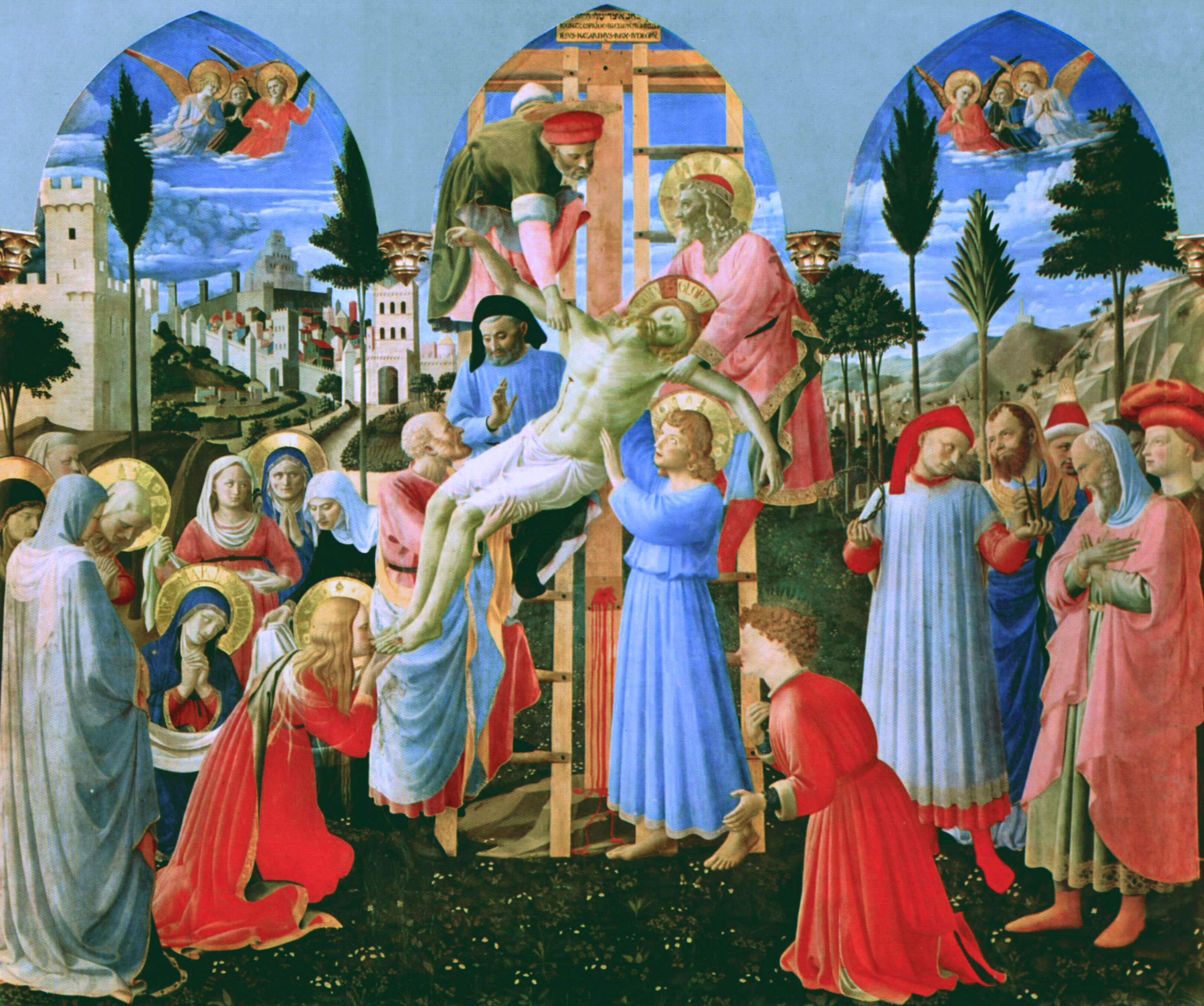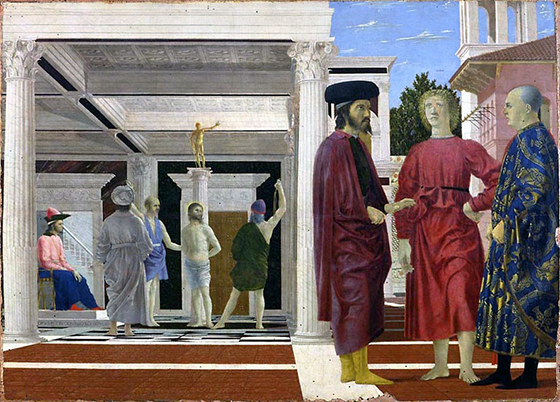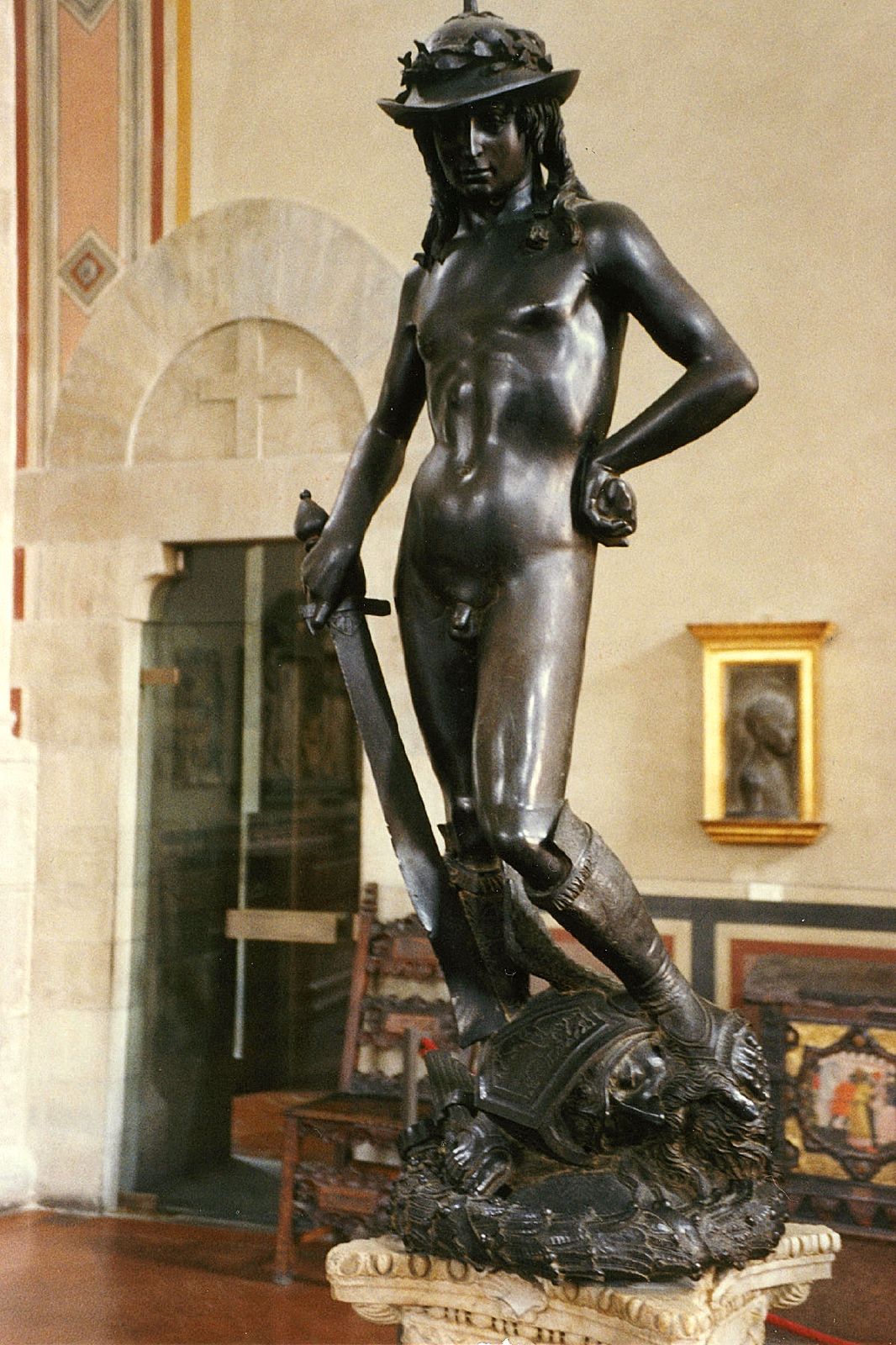In this lesson I learned about Renaissance Art, Part II. This lesson is dedicated mainly to the precursors and early painters of the Renaissance. One such precursor who displayed some of the aspects of Renaissance painting was Cimabue, who lived from around 1240 to 1302. Only one work can really be attributed to him with certainty, the Mosaic of St. John.

Mosaic of St. John
Some influence was also drawn from Giotto who lived from 1276 to 1337, making him a late medieval painter. The characteristics of his paintings include realism and individuating characteristics.
Slowly in the 13th and 14 centuries, perspective and foreshortening, at least in a primitive form develop. By the fifteenth century Brunelleschi comes up with a mathematical formula of perspective, and Alberti writes the Della Pittura, which explains perspective in detail. All major artists study these techniques until everyone is using it.
This brings us to Masaccio who lived a short life from 1401 to 1428. No one knows exactly how he died, but while he was alive he painted the first painting using Brunelleshi’s new formula, the Holy Trinity fresco.

Holy Trinity fresco by Masaccio
Only four works are known for sure to be his, and two of them we know were done jointly with an older colleague. However in his short career, he was able to use foreshortening and anatomical details to make masterpieces. Everybody knew of him and all the major painters who could get to Florence to study his works did so. Along with the exquisite use of principles dreampt up by others, Masaccio pioneered his own, chiaroscuro, or the use of light and shade to improve realism. Chiaroscuro would be used 100 years later in Correggio’s Holy Night, which depicts the Christ child as the source of light.

Holy Night by Correggio
My teacher, Tom Woods said that this next painter he was going to show me had much less talent than Masaccio, but nonetheless had a great emphasis on perspective. He was talking about Paolo Uccello who painted The Hunt by Night.

The Hunt by Night by Paolo Uccello
Next up was Botticelli who lived from 1444 to 1510. He wasn’t really appreciated during his lifetime and would only earn his reputation in the mid-nineteenth century, when his paintings were resurrected. He is famous for his painting the Birth of Venus.

Birth of Venus by Botticelli
However after listening to the sermons of Savonarola, he puts his skills at the service of faith. He would illustrate scenes from Dante’s Divine Comedy as well.
Fra Angelico who lived from 1387 to 1455 was the final cry of the medieval spirit in art. He was a Dominican friar who left his cell to go to Rome and decorate the chapel of Pope Nicholas V with scenes from the lives of St. Stephen and St. Lawrence. While he would demonstrate the principles of perspective, and a bit of realism, there would be less individuating faces and characteristics.

Descent from the Cross by Fra Angelico
Finally there’s Piero della Francesca, who was so focused on displaying perspective that he would literally put the focus of the painting in the background.

The Flagellation of Christ by Piero della Francesca



